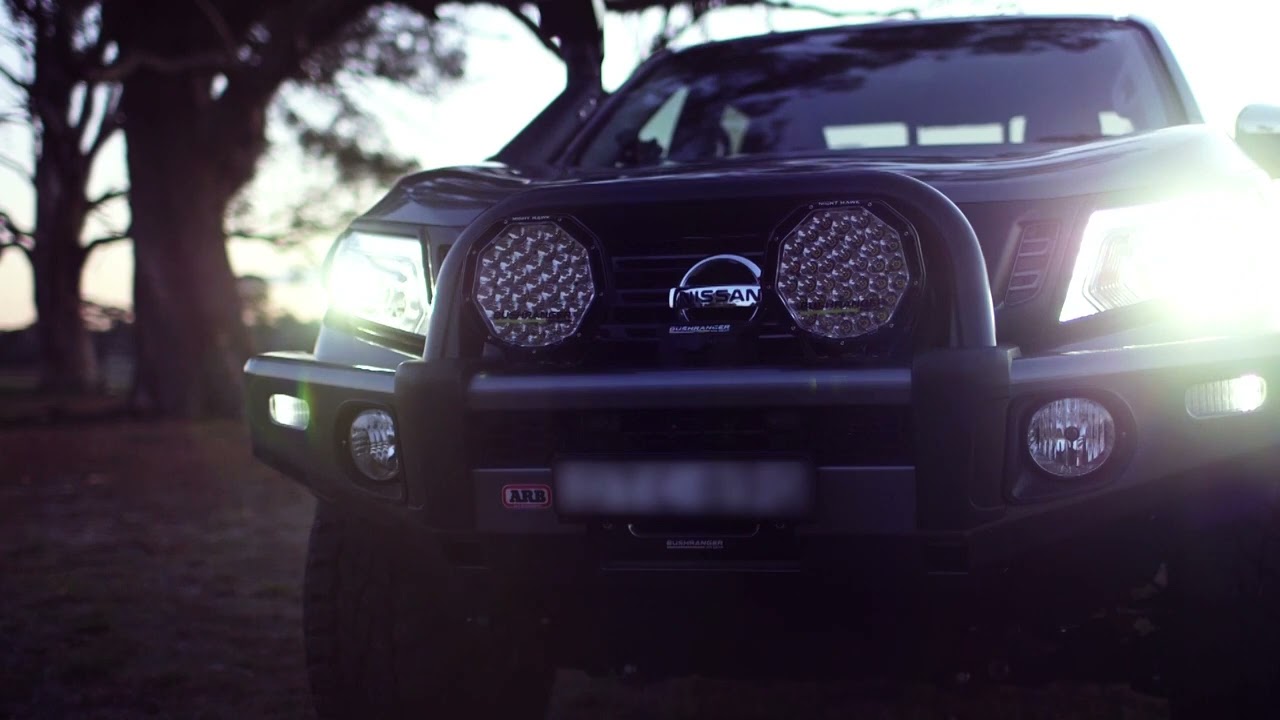
Everything You Need to Know About Different Types of 4WD Lights
Utes and 4WDs are the vehicles most buyers go for, new or used. The option of an additional axle and more traction opens up possibilities you won’t find anywhere else. These cars are primed for exploring the Aussie vastness, no matter which direction you point your vehicle. And they’ll get you there, no questions asked. A few additions help along the way. Additional lights are a must on any car, and on vehicles spending most of their time on poorly lit country roads, the pitch darkness of the bush, or the uncertainties of new worksites, they’re a game-changer.
Lighting options have exploded in recent years. Tech has got better, meaning more brightness, build is on another level than before, and prices are coming down. Buyers can outfit their rigs just the way they like. Going for dedicated 4×4 lights will also provide some peace of mind, with safety at the fore. Drivers will avoid incidents with other vehicles, Australian wildlife and boulders or branches in the way.
Contents
Types of Off-Roading Lights
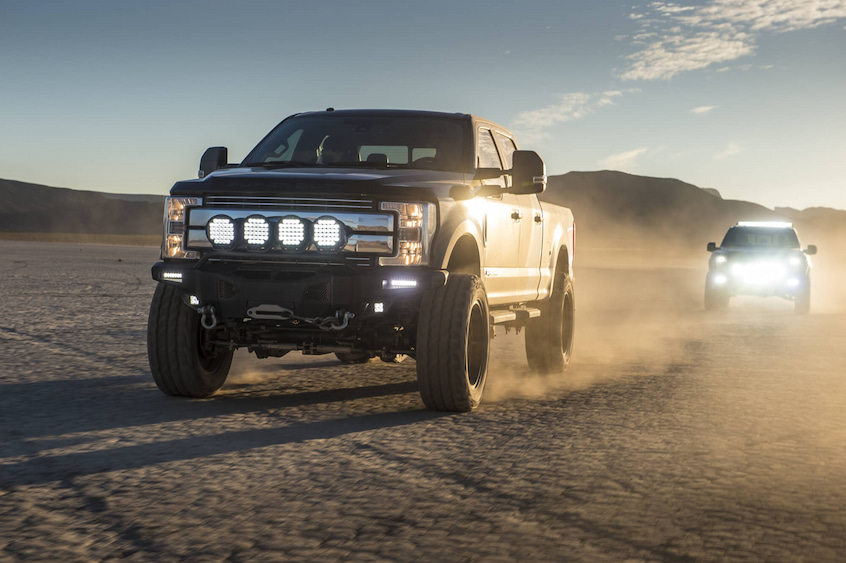
Different words are thrown around when it comes to automotive lighting. New buyers will hear of driving lights, or those that are fitted near the grille to complement the car’s head and/or fog lights, light bars situated higher up (often on roof racks or sports bars), and work lights that you’ll use at jobsites with poor lighting. Needs dictate buying decisions, and you can have a combination of all the lights mentioned, and at the brightness levels for the environment, you’ll be using your 4WD or ute.
Driving lights come in flood beams to flood closer areas with tons of lighting and spot beams to light up the road at further distances. The angle at which the light is dispersed is the differentiating factor. This and the use of different lighting arrays and lens setups. Light bars are long bars, often with dozens of smaller LEDs that douse the path ahead with either a spot beam, or a combination beam to light areas to the sides of the vehicle. Work lights are self-explanatory, often in flood beams and used to light areas like camping sites, jobsites or driveways.
Light Tech: LEDs, Halogens or HIDs?
LEDs
Drivers will instantly recognise the lighting from LEDs. They’re the standard fit in almost all new car headlights (even in lower trims), they’re unobtrusive and won’t blind you head-on. They’re also lights that offer decent brightness, but use the least power to do so, Options weren’t available for off-roading uses until recently, due to the higher costs involved. But that now has all changed. LED chips responsible for the light have become smaller, more powerful and more efficient, so more light can be beamed from smaller housings. And more competition has brought prices down.
LEDs also benefit from less heat, so drivers will get constant output, no matter how hot it is outside. They’re more durable as a result, and will outlast halogen or HID bulbs for any application. Most LEDs are rated for at least 50000 hours, meaning they’ll last decades.
Halogens
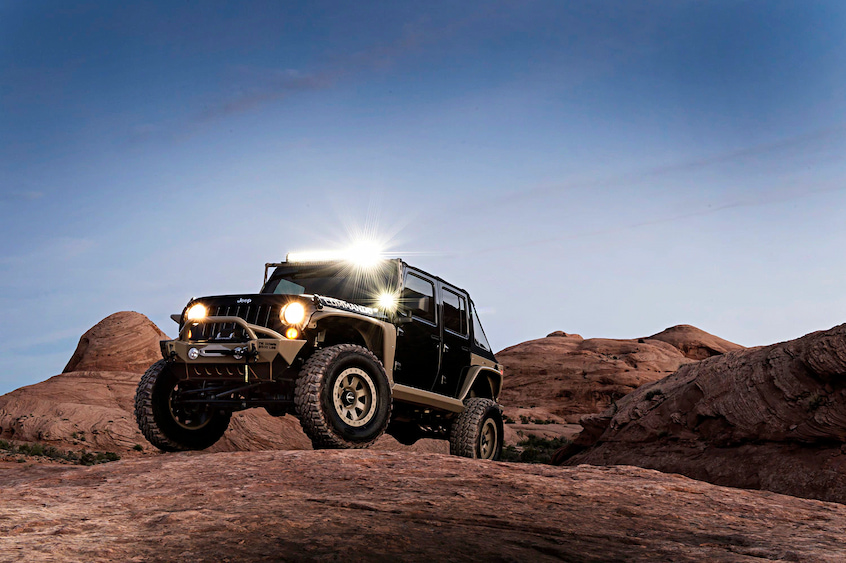
These are the traditional, low-cost choice when your budget is tight. They too have been reworked in current 4x4x lights to get beams further out. But this comes at a cost. Halogens generate light by heating a metal filament with halogen gas. This is an improvement over older incandescent lights that all of us threw out ages ago. Heat levels are higher for the amount of light produced, and they draw more power from the batteries. You might have lower upfront costs, but more replacement bulbs will dent your back pocket in the long run.
HIDs
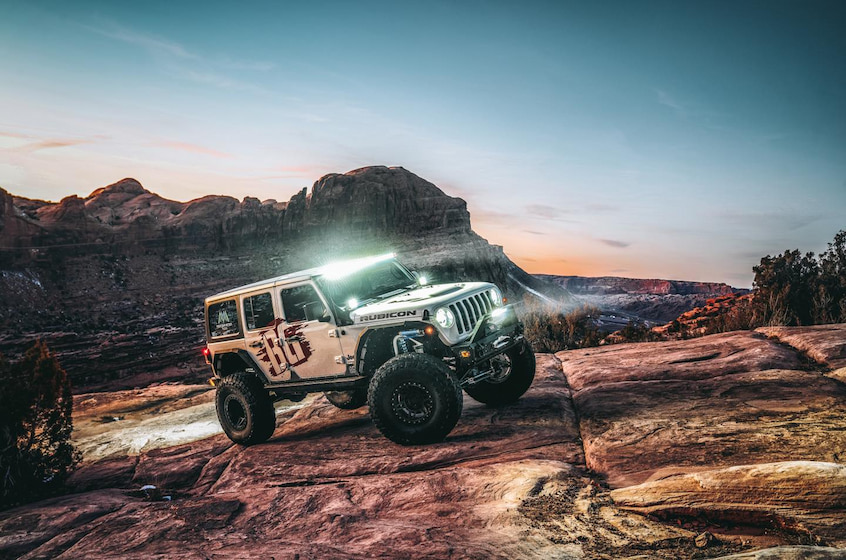
High-Intensity- Discharge (HID) lights, or Xenons, were the newest tech a decade or so ago, but have been replaced in almost every application by LEDs. They work in a similar way to halogens, heating up a noble gas between two electrodes with an electric charge. The difference is the brightness, and HIDs still reigns here. So, if you need to light the furthest distances down the road, it’ll be with HIDs. Mind, LEDs are not far behind and most are now cheaper. HIDs also have better colour temperatures than halogens and are easier on the eyes. For natural lighting, the work put in LEDs means they come close to daylight, so deal with eye strain and fatigue the best.
What to Look For
4WD lights need to be built tough, have good brightness levels, work in all conditions and last. They shouldn’t need a lot of work to fit and wire, Metal housings are standard in all off-roading lights, so won’t dent or crack from spraying rocks and dirt. Covers are thick reinforced plastics and durable.
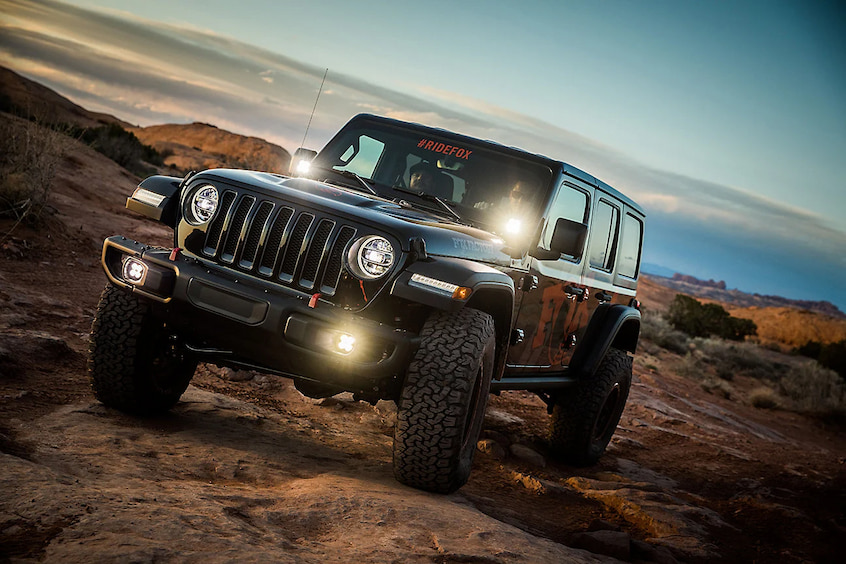
Brightness levels depend on size, design and bulb types used. LEDs fare well in this respect, with most chips now able to light up to 1000m. Look for effective lumens as this is the light that you can see after they’ve been on for half an hour. Light makers also state ‘Raw Lumens’ or the brightness under ideal conditions. Bigger lights, like wider dual row light bars, put out more light, but they need more power from batteries. Take this into account if you’re fitting more lights to the vehicle.
Lastly, mounting and wiring should be straightforward. Mounting brackets are supplied for both flush and rail/pedestal mounted lights and need to hold the housing at the desired angles for optimal results. Wiring harnesses are simple plug-and-play fitments, quick to connect to lighting looms and from there to car or secondary batteries.
Go for a quality build, good light and brightness levels, and lights easy to fit. Shop for dedicated off-roading lights at lighting specialists or major 4×4 stores.

